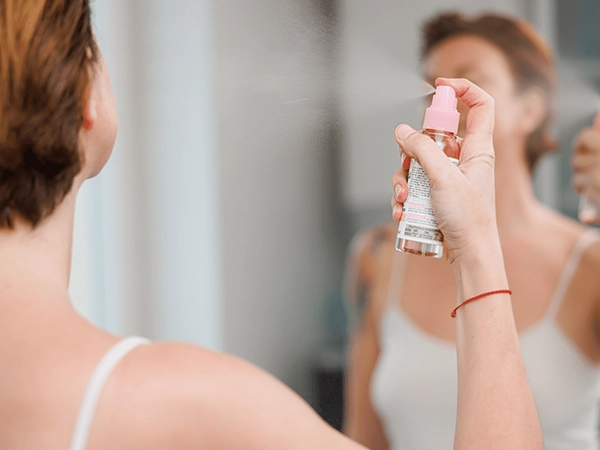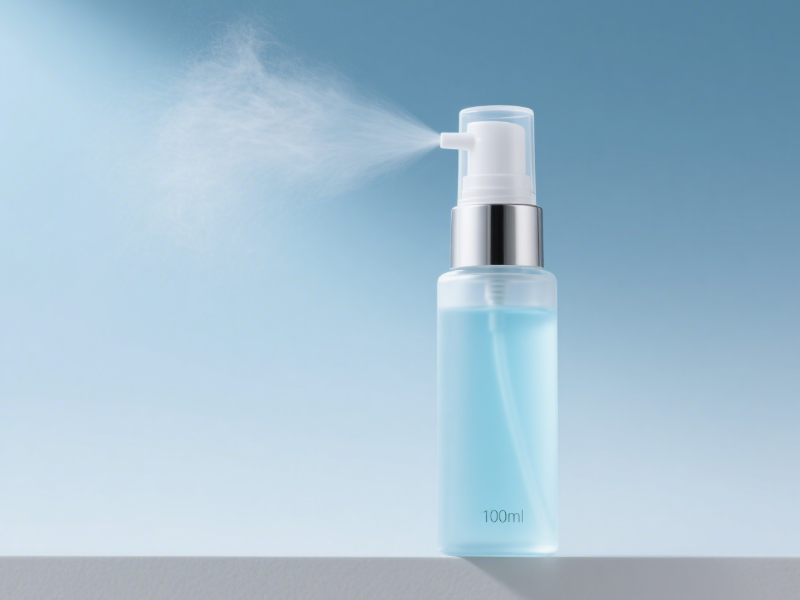Views: 26 Author: Site Editor Publish Time: 2025-09-24 Origin: Site












Portable fine-mist spray bottles have become a daily essential—whether for spritzing facial toner, applying hair mist, or dispensing plant care solutions. Their ability to turn liquid into a light, even mist (instead of a messy stream) relies on a simple yet clever combination of physics and mechanical design. Unlike bulky sprayers, these compact spray bottles use basic fluid dynamics to create a smooth mist, making them portable and easy to use. Below, we’ll break down the atomization principle step by step, from key components to the science behind each spray.
Before understanding how atomization works, you need to recognize the parts that make it possible. Every fine-mist spray bottle has four essential components, each playing a unique role:
Liquid Reservoir: The main bottle body that holds the liquid (e.g., toner, perfume, or water). It’s usually made of plastic or glass, and its size varies from small travel-sized bottles to larger household ones. The reservoir connects to the dip tube, ensuring liquid is drawn up when the sprayer is activated.
Dip Tube: A thin, flexible tube that extends from the bottom of the reservoir up to the spray mechanism. Think of it as a “straw” for the bottle—its job is to pull liquid from the reservoir to the pump, even when the bottle is held at an angle.
Pump Assembly: The part you press with your finger. Inside the pump, there’s a small chamber (where liquid collects) and a one-way valve (a tiny “door” that controls fluid flow). When you press the pump, it compresses the chamber; when you release it, the valve resets to draw in more liquid.
Fine-Mist Nozzle: The tiny opening where the mist comes out. Unlike standard spray nozzles(which have larger holes), fine-mist nozzles have an ultra-small, often slotted opening (less than 1mm wide). This narrow design is critical for breaking liquid into tiny droplets.
The atomization process starts the moment you press the pump. Here’s what happens in this initial step:
When you push down on the pump, you squeeze the air and liquid inside the pump’s small chamber. This compression reduces the chamber’s volume, which increases the pressure inside. Boyle’s Law states that for a fixed amount of gas, pressure and volume are inversely related—so less space means more pressure.
The high-pressure mixture of air and liquid inside the chamber needs to escape. The only way out is through the fine-mist nozzle, which acts as a “release valve” for the built-up pressure.
As the high-pressure liquid-air mixture rushes through the nozzle, two key things happen to start atomization:
Velocity Increase: The nozzle’s tiny opening forces the mixture to speed up dramatically. This is due to the venturi effect—when a fluid (liquid or gas) passes through a narrow space, its speed increases while its pressure decreases. For example, water flows faster through a garden hose when you squeeze the end; the same logic applies here.
Shear Force from Air: As the fast-moving liquid exits the nozzle, it collides with the surrounding air (which is at normal atmospheric pressure). This collision creates a “shear force”—a pulling and pushing effect that breaks the liquid stream into smaller pieces. The narrower the nozzle, the stronger the shear force, resulting in finer droplets.
The final step in creating a fine mist is the breakdown of liquid into microscopic droplets—this is true “atomization”:
The combination of high velocity (from the venturi effect) and shear force (from colliding with air) shatters the liquid stream into droplets as small as 10–50 micrometers (about the size of a dust particle). These tiny droplets are light enough to stay suspended in the air briefly, creating the “mist” you see.
Unlike a standard spray bottle (which produces larger droplets that fall quickly), a fine-mist bottle’s nozzle design ensures droplets are uniform in size. This uniformity makes the mist feel light on the skin (for beauty products) or evenly distributed (for plant sprays).

After you release the pump, the bottle readies itself for the next spray—this reset step is what makes the bottle reusable:
A small spring inside the pump pushes the pump back up to its original position. This increases the volume of the pump chamber, which lowers the pressure inside (again, following Boyle’s Law).
The one-way valve inside the pump opens, allowing liquid from the reservoir to be drawn up the dip tube into the chamber. This refills the chamber with liquid, so the next time you press the pump, the atomization process can repeat.
For new or recently refilled bottles, you may need to press the pump 2–3 times to “prime” it. This initial pressing clears air from the dip tube and fills the chamber with liquid, ensuring a smooth mist on subsequent sprays.
The atomization principle isn’t just about creating a mist—it also makes these bottles ideal for certain tasks. Here’s how the science translates to practical benefits:
Beauty and Skincare: For facial toners or setting sprays, fine droplets are gentler on the skin and absorb more evenly. Larger droplets (from standard sprays) can leave streaks or feel heavy, while fine mist blends seamlessly.
Hair Care: Hair mists or heat protectants need to coat strands without weighing them down. The small droplets from a fine-mist bottle cover hair evenly, avoiding clumps or excess product buildup.
Plant Care: Delicate plants (like ferns or succulents) can be damaged by large water droplets. Fine mist hydrates leaves without causing water spots or breaking fragile stems.
Household Cleaning: For surface cleaners, fine mist ensures the solution spreads thinly and dries quickly, reducing streaks on windows or countertops.
The atomization of portable fine-mist spray bottles is a perfect example of simple physics working in everyday tools. By combining pressure changes (from the pump), velocity increases (from the nozzle), and shear force (from air collision), these bottles turn ordinary liquids into a light, even mist. Understanding this principle helps you appreciate why fine-mist bottles are better for tasks like skincare or plant care—and how to use them effectively (e.g., priming new bottles or holding the nozzle 6–8 inches from the surface for optimal coverage). Whether you’re using a small travel-sized mist bottle or a larger household one, the science behind each spray bottle stays the same—making these bottles a reliable, user-friendly choice for daily life.If you are looking for high-quality fine mist spray bottle,welcome to visit our website:https://www.packsubir.com.Contact us by samuel@subircosmetics.com if you have any problems.